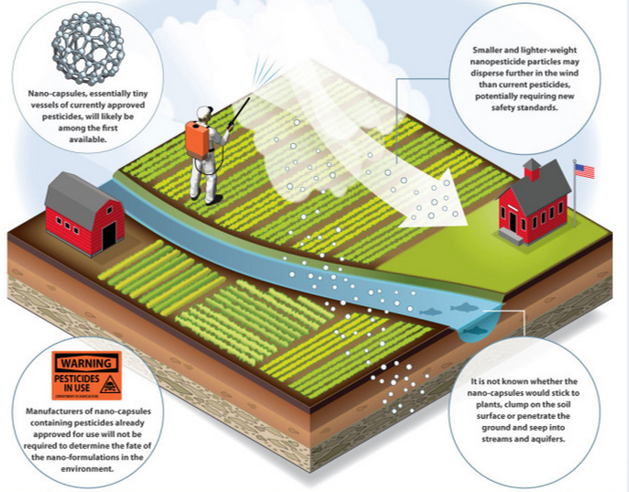NanoFASE Case Study: Fate of Cu(OH)2 nanowires utilised as pesticides
Nanoparticles are of interest for agrochemicals such as pesticides because they may promote more efficient, precise application of active ingredients, reduced loss of product outside the target area, and improved bio-interactions such as uptake by organisms. Nanopesticides take advantage of different types of nanocarriers (e.g., nanocapsules, nanowires, etc.).
NanoFASE set out to understand the fate of copper hydroxide Cu(OH)2 nanowires (NWs) utilised as pesticides once they are in contact with:
• soil in which the particles might sorb
• the associated soil pore water, in which the particles may undergo dissolution
• soil-dwelling organisms (e.g. earthworms, isopods, etc.) and plants (e.g. wheat, etc.).
Dysprosium doped Cu(OH)2 was synthesised to facilitate investigation of the bio-accumulation potential of Cu-containing nanowires in living organisms, allowing discrimination between the engineered NWs and free Cu2+ cations, as well as the engineered NWs and in situ precipitated nanomaterials by element mapping on TEM or SEM, or discrimination of ions and ENMs by spICP-MS for ENM quantification and characterisation of composition (elemental ratio).
 Image credit: Food and Environment Reporting Network; Stacey Harper, Oregon State University Image credit: Food and Environment Reporting Network; Stacey Harper, Oregon State University |
Relevant Processes |
|
Emitted to |
|
|
Agricultural soil Organisms (or plants) in agricultural soil |
|
Read more |
Read also |
|
Kah, M., Kookana, R.S., Gogos, A., Bucheli, T.D. (2018) A critical evaluation of nanopesticides and nanofertilizers against their conventional analogues. Nature Nanotechnology 13, 677–684. https://www.nature.com/articles/s41565-018-0131-1
Neves Joana, Cardoso Diogo N., Malheiro Catarina, Kah Melanie, Soares Amadeu M. V. M., Wrona Frederick J., Loureiro Susana (2019) Copper toxicity to Folsomia candida in different soils: a comparison between nano and conventional formulations. Environmental Chemistry, https://doi.org/10.1071/EN19061 |
Contact
 Susana Loueiro
Susana Loueiro
Email: sloureiro@ua.pt
 Iseult Lynch
Iseult Lynch
Email: i.lynch@bham.ac.uk

